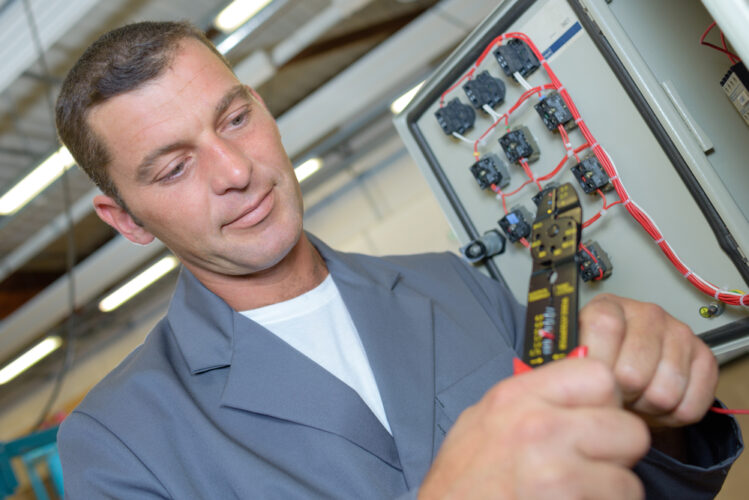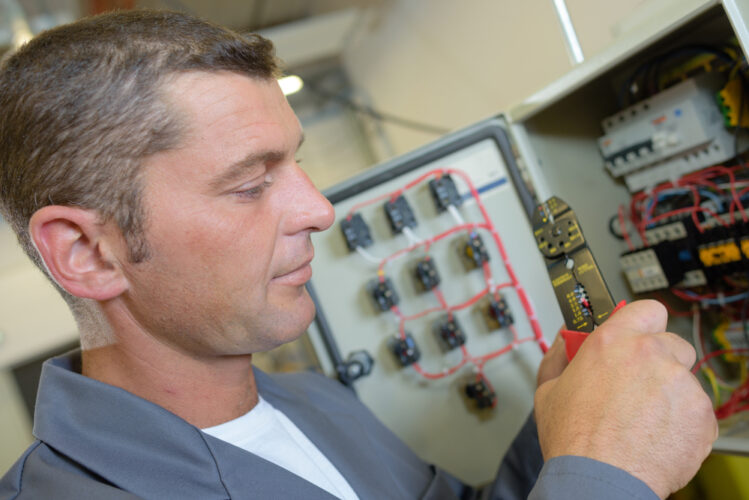Are you uncertain about what you need for subpanel grounding? Well, it can be a bit confusing. But with the proper instructions, you’d be able to avoid future accidents or refrain from making obvious mistakes.
What are the subpanel grounding requirements?
To determine subpanel grounding requirements, check the wire size and types of wires used in the subpanel. There are separate rules for subpanel grounding for detached structures. Subpanel grounding in the same build is not that hard. The neutral and ground bars must be separated.
Are you still a little confused? Relax! All of your complaints will be addressed by me. And try to give you some clarity on this essential aspect of electrical safety.
What are the Basics for a Subpanel Grounding
You might already know how to ground the main panel. Grounding a subpanel is not that different. To get it perfect, you’ll need to follow a few guidelines. A neutral bar is not grounded in a sub-panel. Instead, it is joined to the sub-panel enclosure via spacers to avoid grounding.
First, you should check how many wires the feeder has. If you already have a subpanel installed, you need to check if it has four wires or not. Some old buildings have three wire feeders. But this type of wiring is now banned.
Before starting work, you can check out the National Electrical Code or the regional code. Some of the rules and wiring types vary in different states.
There are separate rules and requirements for grounding a subpanel in a detached building. Let’s check them out first.
Subpanel Grounding Requirements for Detached Buildings

In this type of subpanel grounding, it is better that you consult an electrician first. This type of extensive project requires a license. So if you don’t have one, you should definitely leave it for the professionals.
But don’t worry! We have made a list of requirements that you can check before consulting an electrician. So, let’s start. Shall we?
Requirement 1
Check to see if there is a grounding rod in the building or the structure. If a facility already has a grounding rod, these rods must be bonded together to make a grounding electrode system.
The ground and the neutral wires should be connected together at the subpanel. If not, then you’d have to install it.
Requirement 2
Before adding wires to a subpanel, you should check if the equipment grounding conductor is a wire type or not.If that’s the case, the wires should be sized per the National Electrical Code. We already know that grounding wire and gauge can be the same size.
You can check article 250 of NEC to get an idea about the types and sizes of the cables you can use.
Requirement 3
Examine the building or structure serviced to check whether there are any continuous metallic routes between the feeder source and the destination. If not, you won’t have to install a grounding rod.
Requirement 4
Decide beforehand how many circuit breakers you’d need in the sub-panel. If you need more than six, the main circuit breaker must be installed.
Subpanel Grounding Requirements in the Same Building

Grounding a subpanel in the same building is not hard. You should double-check a few things first. We have listed a few requirements that you’d need to maintain.
Let’s check them out!
Requirement 1
If you’re going to have a second panel, you need to segregate the neutral and ground terminals or bars. That’s why the main circuit feed to the subpanel has to have four wires, each with its own dedicated insulated cable.
Requirement 2
Remember that a terminal slot in the grounding bus is approved for one conductor unless it says otherwise. It doesn’t matter how large the terminal is; only one conductor can fit in. There are certain exceptions to this rule.. You need to check out the manufacturer’s instructions first.
You should get an excellent terminal bar kit for your subpanel. We have listed the best kits in the market for you:
| Product 1 | |
| Product 2 |
Requirement 3
Never attach subpanel neutral bars or terminals to the enclosure or the subpanel’s ground. This could result in electrical shock. Moreover, you shouldn’t stick a metal ground rod to any part of the subpanel.
Requirement 4
You can connect all ground wires and neutrals together at the main panel. The bonding for the primary ground sources can also be done there. Ground sources, like ground rods, are bonded there as well.
FAQs
Question: Do I need to have a lot of ground rods to make a subpanel?
Answer: No. You’d need at least one grounding electrode, or ground rod, for every sub-panel in a detached building. Whether you need two or not is determined by the soil and local regulations. So, check your local code requirements.
Question: Do I need a permit to install a new subpanel?
Answer: In most places, you don’t need a permit to make small electrical changes. But each city or town has different codes. So, before you begin the job, check with your city’s building and regulations department. And find out if you need to obtain a permit or not.
EndNote
Now you have a decent idea about subpanel grounding requirements. You may double-check that everything is in working order before installing a subpanel.
It is advantageous if you are familiar with electrical circuits. However, if you believe this is too much for you, simply contact a professional. No need to take any chances.
Good luck with your work!